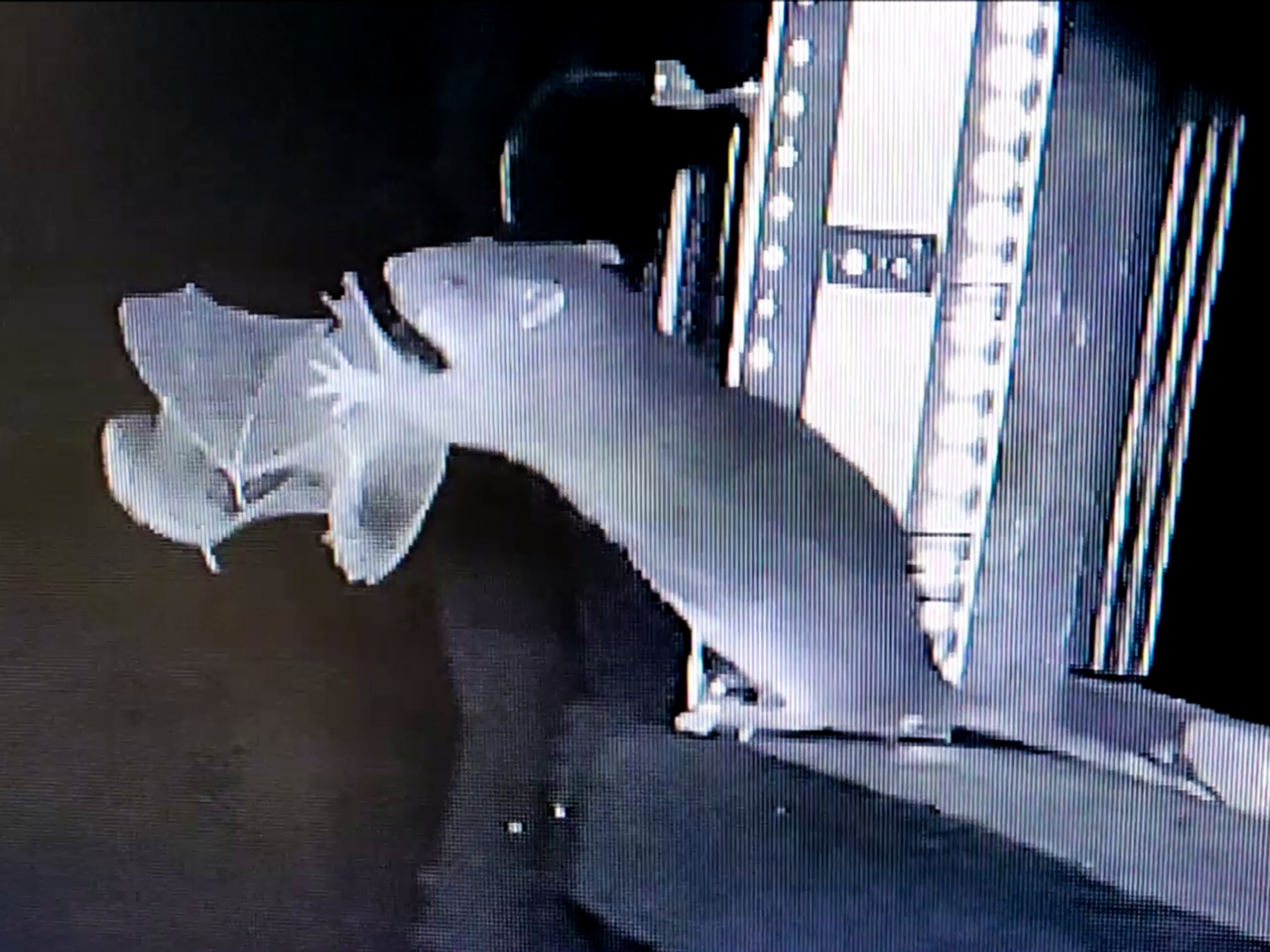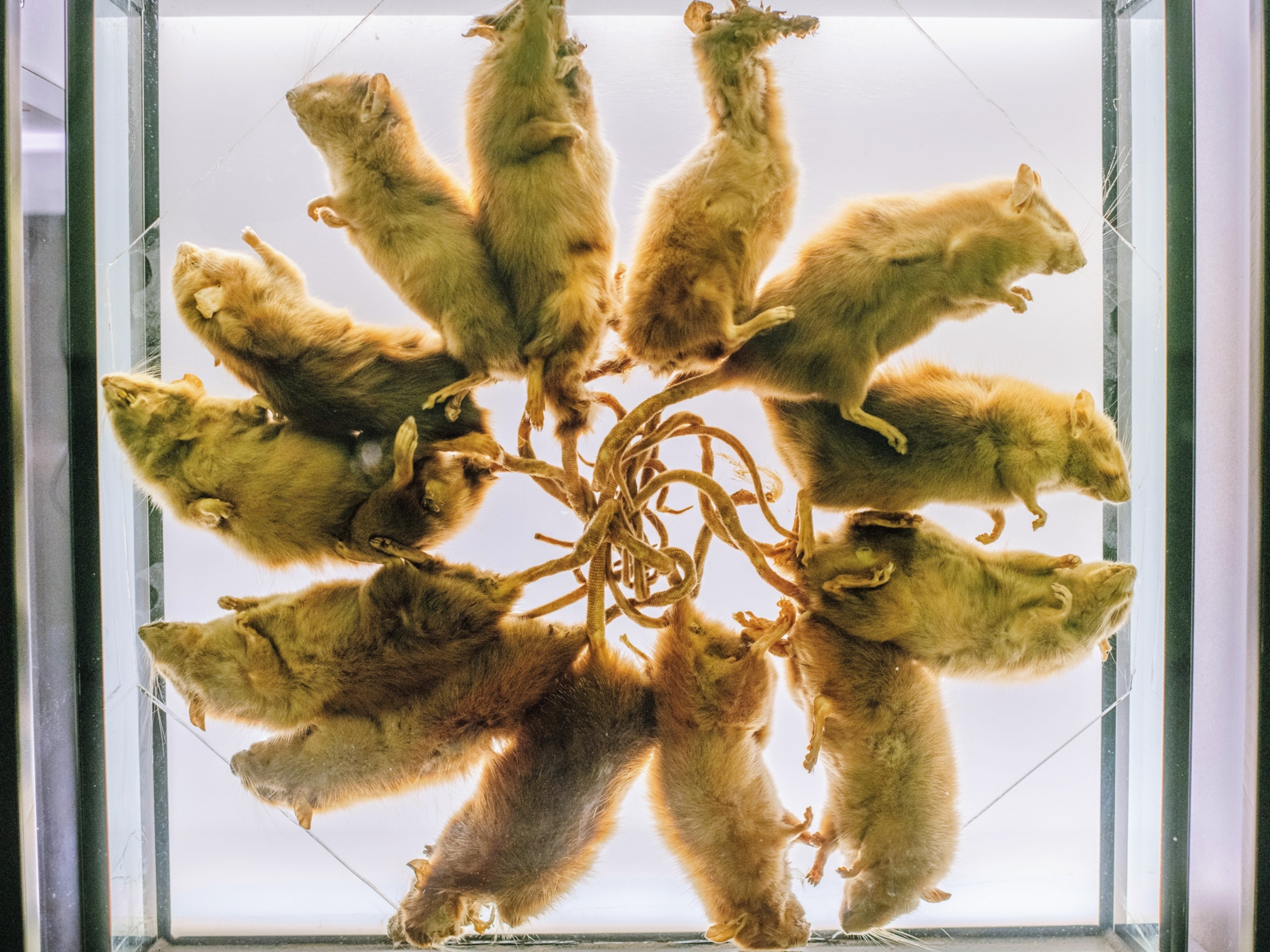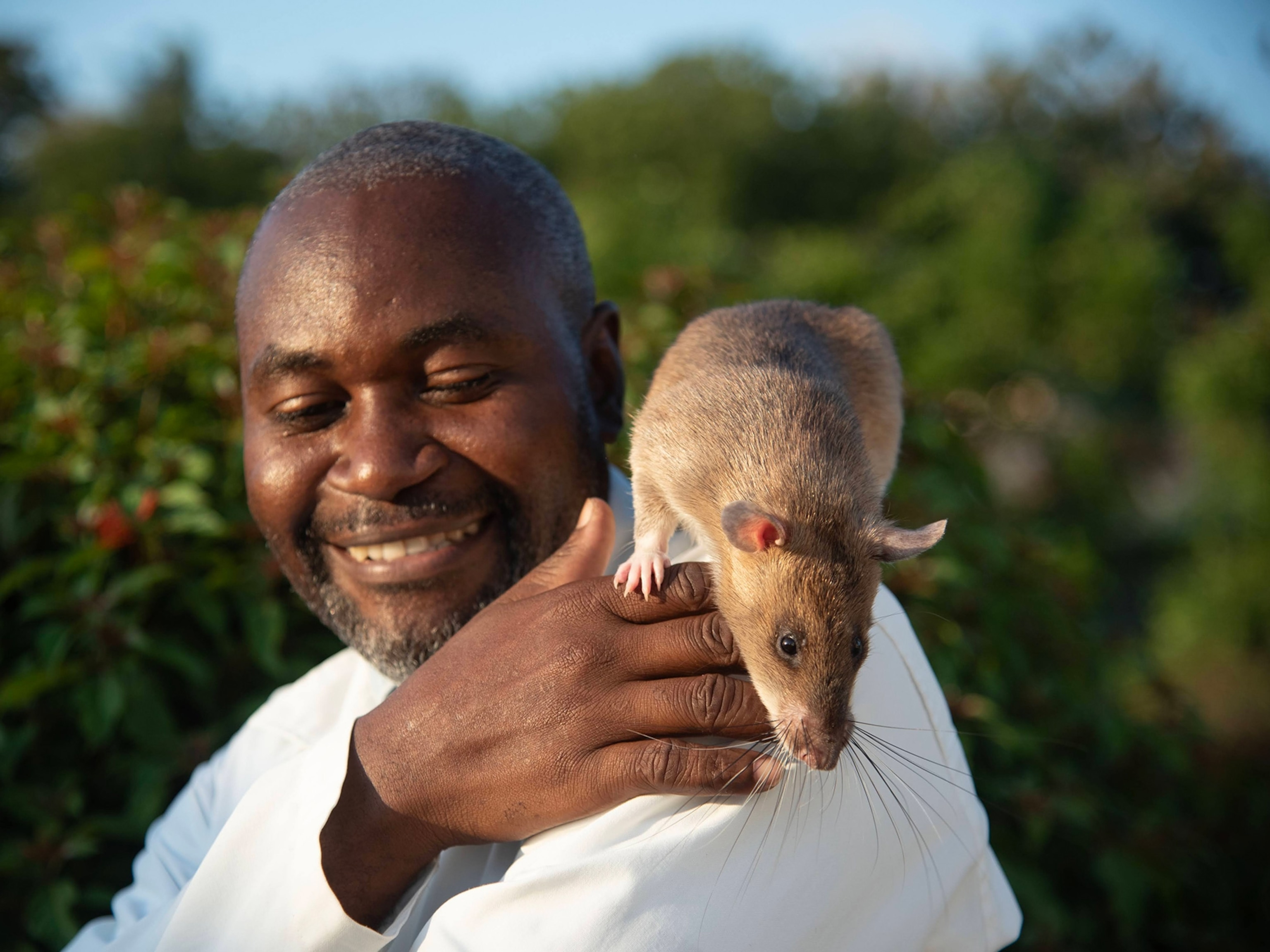
Spiky Rat Applies Plant Poison to Turn Hair Deadly
Rodent is first animal known to apply lethal toxin to its body.
A porcupine-like rat turns its quills into lethal weapons by coating them with a plant toxin, a new study says. Neighboring African hunters use the same substance to make elephant-grade poison arrows.
No other animals are known to use a truly deadly external poison, researchers say.
Scientists have long suspected that the crested rat might be using poison because of stories of dogs becoming ill or dying after encounters with the rodent, and because it has a distinct black-and-white warning coloration seen in other species.
It was unclear until now, however, where the nocturnal rat got its poison.
The researchers made their discovery after presenting a wild-caught crested rat with branches and roots of the Acokanthera tree, whose bark includes the toxin ouabain.
The animal gnawed and chewed the tree's bark but avoided the nontoxic leaves and fruit. The rat then applied the pasty, deadly drool to spiky flank hairs. Microscopes later revealed that the hairs are actually hollow quills that rapidly absorb the ouabain-saliva mixture, offering an unpleasant surprise to predators attempt to taste the rat.
Poison isn't the only item in the armory of the roughly foot-and-a-half-long (45-centimeter-long) rat, which lives in burrows in East Africa, the team says.
Very tough skin and a reinforced skull that looks like "it could take a couple of head shots" also suggest the rodent doesn't shrink from a fight, said study co-author Tim O'Brien, a biologist with the Wildlife Conservation Society.
And with leopards, honey badgers, jackals, and wild dogs among its assumed predators, the rat may need all the advantages it can muster.
(Related pictures: "New Giant Rat, Pygmy Possum Discovered.")
Rubbing on the Poison
"For as long as colonials have been in Kenya, there have been tribes that specialize in hunting elephants using this poison, and now we're seeing it being used in rhino poaching," O'Brien said.
(Related: "South Africa's Rhino Slaughter Rages On.")
Ouabain can cause paralysis and, at high enough doses, heart attacks.
"The dogs that we know of that have attacked the crested rat have suffered everything from temporary paralysis for a couple of weeks to death," said O'Brien, who is also a researcher at the Mpala Research Centre in Kenya, where the experiment was conducted.
Other mammals are known to use toxins that they don't produce themselves. For example, a hedgehog species applies a mild toxin from a toad to its fur, O'Brien said. Likewise, some capuchin monkeys rub an extract from millipedes onto their fur to repel insects.
"But there are no other examples of an animal using [an external substance] that is actually a lethal toxin," he said.
Why Is Rat Immune to Poison?
While the new study solves one crested rat mystery, others remain.
It's unclear, for example, why the rodent itself doesn't suffer from the poison. One idea is that its saliva subtly alters the poison, O'Brien said.
Scientists also don't know how each young crested rat learns about ouabain. Is the chemistry lesson passed from parents to offspring? Does each animal discover the poison on its own?
"No one knows," he said. "We know the general outlines about this animal but none of the details."
The crested rat poison study appeared August 3 on the website of the journal Proceedings of the Royal Society B.





